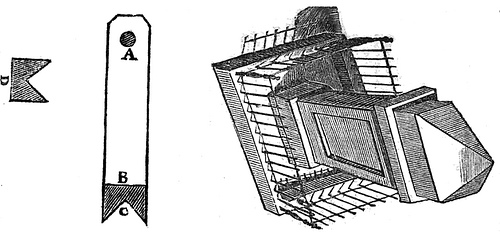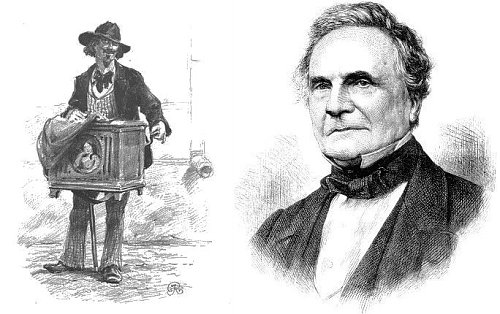
This clever anamorphic illusion was invented by W. Shires in 1821. Cut out the center piece, make a hole at A, fold it at B, and position it at D. (Here’s a larger version.)
Peer through the hole with one eye, preferably with a light source on your right, and you’ll see the tombstone in three dimensions, surrounded by a low palisade.
Here’s another scene using the same principle; position the eyepiece where the turrets’ lines would converge and “the whole view will appear in its just proportions, representing a castle at a considerable distance, the loftiest part of which appearing scarcely an inch high.”


